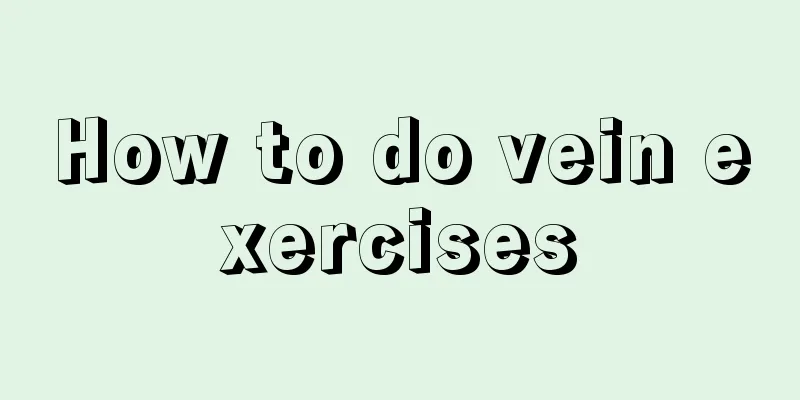How to do weighted squats?

|
Regular physical exercise can greatly improve our body. Squats are the simplest form of exercise and are very simple. They can help lose weight and increase leg strength. Many people want to achieve better results, so they increase the difficulty of exercise. Weighted squats are a common exercise method. Let’s learn how to practice weighted squats. How to do weighted squats? 1. Get into position. Beginners must first determine the exact location of the barbell. Keep your head up, chest out, and back straight, but don't hyperextend. After retracting your shoulder blades, place the bar on your raised trapezius and deltoid muscles to adjust your balance. The weight of the barbell is shared by four points, with the trapezius muscle bearing most of the weight, so there is no need for cushioning materials such as sponges. Even if you are thin and have weak deltoid and trapezius muscles, you can still eat heavy weights without any pain or other discomfort. Raise your arms to the side and hold the bar with both hands for stability. Place a wooden board or barbell plate about 3 cm thick under your heels. After the shoulders are loaded with weight, the total center of gravity of the human body and the barbell moves backward, but the back cannot lean forward. Only by raising the heels and passively moving the center of gravity forward can the body be restored to a stable supported state. The restored balance also allows the quadriceps to be more stressed during the squat. After lifting the barbell, adjust the position of your feet. The distance between the two feet is generally the same as the width of the shoulders. If the feet are too far apart, the inner adductor muscles will be overstressed and overdeveloped, which is not good for aesthetics and life. Your feet should be in a natural stance with an angle of 30 to 45 degrees. Placing the barbell on the cervical vertebrae will cause pain and also form a chest-hunching and waist-arching movement, which will increase the tension of the waist and back muscles, straighten the limbs and straighten the back. 2. Squat. After getting into the ready position, slowly bend your knees and squat down in a controlled manner while taking a deep breath. When squatting, the direction of the knee joint is the same as the direction of the toes, and squat until the thighs are parallel to the ground or slightly lower than the knees. If the hips fall to the ankle joints, you are squatting too low, which is not only unnecessary but also easy to cause injuries to the knees, ankles and other joints. The speed of squatting should not be too fast, the rhythm should be mastered. At least the speed of squatting should not be faster than the speed of squatting up. Because there is an obvious time effect after muscles are stretched, the longer the time, the more the muscle strength decreases, and vice versa. Therefore, the weight that a weightlifter can lift immediately after squatting, he may not be able to lift if he pauses too long after squatting. The reason is that he immediately squatted down and took advantage of the stretching of muscle groups such as the gluteal muscles and quadriceps, which increased muscle elasticity and enhanced muscle strength. The requirements for bodybuilding exercises are different. You need to hold your squat to the lowest point for 1-2 seconds before standing up again. Although the weight of the squat is smaller, the actual force on the lower limb muscles is not reduced, and it is relatively safer. 3. Squat up. The most valuable part of squat exercise is the squatting phase. During this phase, the focus is on the legs, using all the strength in the legs while exhaling. Keep your head up, and imagine pushing your legs hard to push your head upward, rather than lifting your hips first and then straightening your back. Keep your center of gravity stable throughout the entire squat process and do not move your feet. After the body is upright, the quadriceps continue to exert force and contract extremely to keep the knee joint in a hyperextended position for 1-2 seconds. The above is an introduction to how to practice weighted squats. After understanding it, we can improve our bodies through exercise. In addition, we must persist in long-term exercise in daily life to achieve better results, and we cannot do too strenuous exercise at the beginning. There must be a slow adaptation process. |
<<: What are the benefits of squatting?
Recommend
Can I do squats and deadlifts on the same day?
Squats and deadlifts are no strangers to those wh...
What is the correct posture for horse stance?
I believe many of my friends rarely pay attention...
Thigh muscle training method
In daily fitness activities, targeted fitness is ...
What should you pay attention to when running to lose weight
Weight loss is a topic that many people are conce...
How many times a week should I practice yoga to lose weight?
Yoga is a common form of physical exercise in our...
What are hip-lifting pants?
Nowadays, everyone cares more about their appeara...
How should Tai Chi be performed?
When talking about Tai Chi, everyone should be fa...
Is it better to run in the evening to lose weight or run in the evening to lose weight?
Exercising for a certain period of time every day...
How to do waist and abdomen exercises
Waist and abdomen exercises can exercise a person...
What preparations should you make before running?
Before doing any exercise, people usually warm up...
When is the best time to do sit-ups?
Now more and more people are beginning to join in...
What are the push-up positions?
Many people like to use some sports to improve th...
Exercise through long-distance running? One move is more effective than running 1000 meters
What is a plank? There is only one plank movement...
What are the key points of butterfly stroke?
Swimming is a popular sport nowadays. It has many...
The most effective way to train your abdominal muscles
It is the wish of many male friends to develop go...









